Coburn J.W. Algebra and Trigonometry
Подождите немного. Документ загружается.

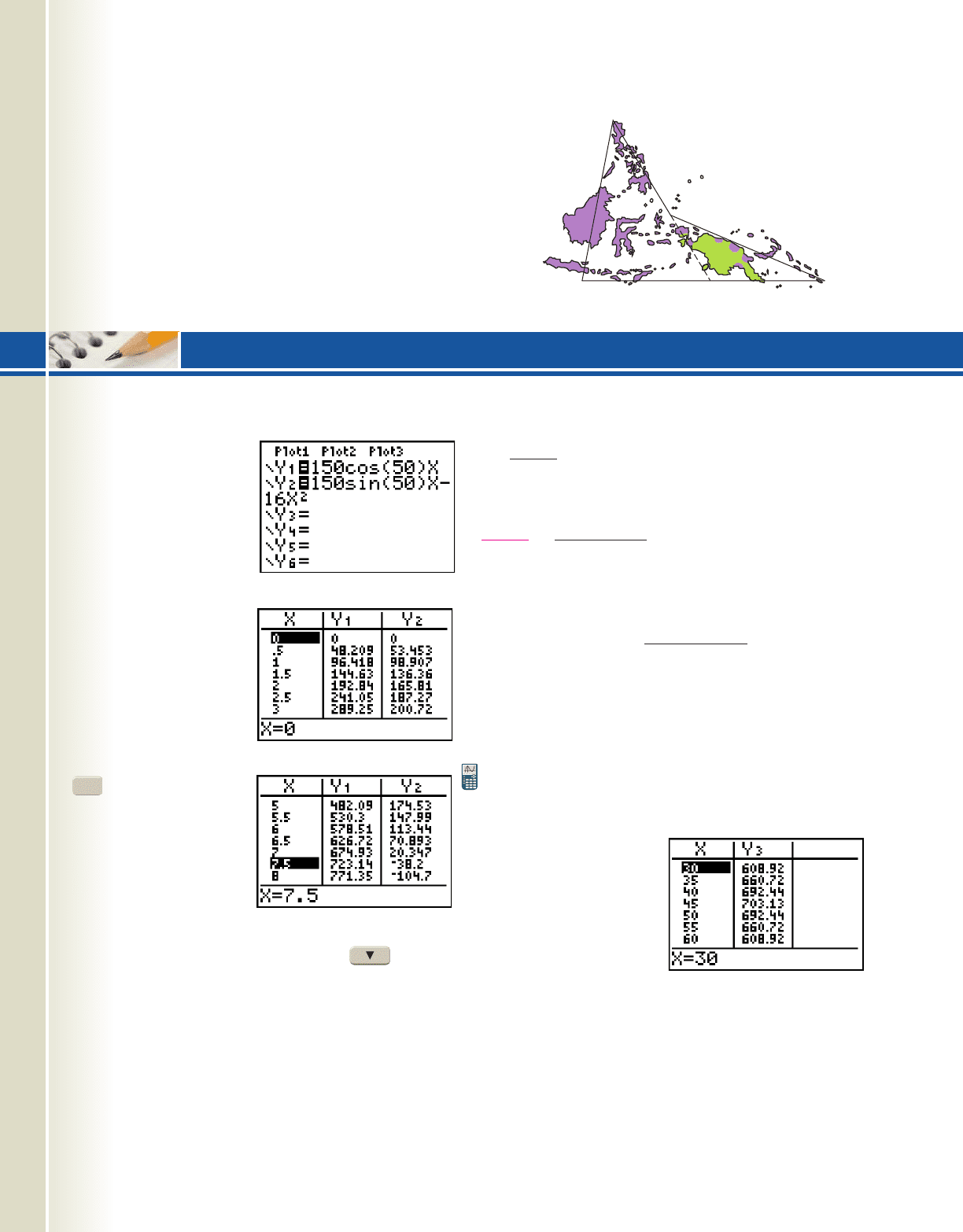
790 CHAPTER 7 Applications of Trigonometry 7-80
There are two important
aspects of projectile motion
that were not discussed
earlier, the range of the
projectile and the optimum
angle that will maximize
this range. Both can be
explored using the equa-
tions for the horizontal and
vertical components of
the projectile’s position:
and
In Example 10 of
Section 7.4, an arrow was
shot from a bow with initial
velocity at
an angle of Enter
the equations above on the
screen as Y
1
and Y
2
,
using these values (Figure
7.81). Then set up the
TABLE using
and the AUTO
mode. The resulting table
is shown in Figure 7.82,
where Y
1
represents the horizontal distance the arrow has
traveled, and Y
2
represents the height of the arrow. To find
the range of the arrow, scroll downward until the
height (Y
2
) shows a value that is less than or equal to zero
(the arrow has hit the ground). As Figure 7.83 shows, this
happens somewhere between and . We
could now change the TBLSET settings to
and to get a better approximation of the time
the arrow is in flight (it’s just less than 7.2 sec) and the hor-
izontal range of the arrow (about 692.4 ft), but our main
interest is how to compute these values exactly. We begin
with the equation for the arrow’s vertical position
Since the object returns to Earth
when we substitute 0 for y and factor outy 0,
y 1
v
sin 2t 16t
2
.
¢Tbl 0.1
TblStart 0
t 7.5 sect 7
¢Tbl 0.5
TblStart 0,
Y =
50°.
v
150 ft/sec
t 16t
2
.
1
v
sin 2vertical S
horizontal S 1
v
cos 2t
Solving for t gives or
Since the component of velocity in the hori-
zontal direction is the basic distance relationship
gives the horizontal range of
or . Checking the values given for
the arrow ( and ) verifies the range
is But what about the maximum possible range
for the arrow? Using for R results in an equation
in theta only: which we can
enter as Y
3
and investigate for various After carefully
entering as Y
3
and resetting TBLSET to
and the TABLE in Figure 7.84
shows a maximum range of about 703 ft at Resetting
TBLSET to and verifies this fact.
For each of the following exercises, find (a) the height
of the projectile after 1.75 sec, (b) the maximum height of
the projectile, (c) the range of the projectile, and (d) the
number of seconds the pro-
jectile is airborne.
Exercise 1:A javelin is
thrown with an
initial velocity
of 85 ft/sec at
an angle of
Exercise 2:A cannon ball
is shot with an initial velocity of 1120 ft/sec
at an angle of
Exercise 3:A baseball is hit with an initial velocity of
120 ft/sec at an angle of Will it clear
the center field fence, 10 ft high and 375 ft
away?
Exercise 4:A field goal (American football) is kicked
with an initial velocity of 65 ft/sec at an angle
of Will it clear the crossbar, 10 ft high and
40 yd away?
35°.
50°.
30°.
42°.
¢Tbl 1TblStart 40
45°.
¢Tbl 5,TblStart 30
R12
.
R12
150
2
sin cos
16
,
v
150
R 692.4.
50°
v
150 ft/sec
v
2
sin cos
16
v
sin
16
v
cos
#
R D r
#
t
v
cos ,
t
v
sin
16
.
t 0t: 0 t1
v
sin 16t2.
CALCULATOR EXPLORATION AND DISCOVERY
Figure 7.81
Figure 7.82
Figure 7.83
Figure 7.84
Investigating Projectile Motion
19. Solve using u-substitution, the quadratic formula,
and the nth roots theorem:
20. Due to its huge biodiversity, preserving Southeast
Asia’s Coral Triangle has become a top priority for
conservationists. Stretching from the northern
Philippines (P), south along the coast of Borneo (B)
to the Lesser Sunda Islands (L), then eastward to the
Solomon Islands (S), this area is home to over 75%
of all coral species known. Use Heron’s formula to
help find the total area of this natural wonderland,
given the dimensions shown.
z
4
6z
2
58 0.
23⬚
1690 mi
2010 mi
Halmahera
2390 mi
1275 mi
1590 mi
P
L
B
S
College Algebra & Trignometry—
cob19529_ch07_784-792.qxd 01/13/2009 08:16 PM Page 790 ssen 1 HD 049:Desktop Folder:Satya 13/01/09:Used file:MHDQ092-7-SUMM:
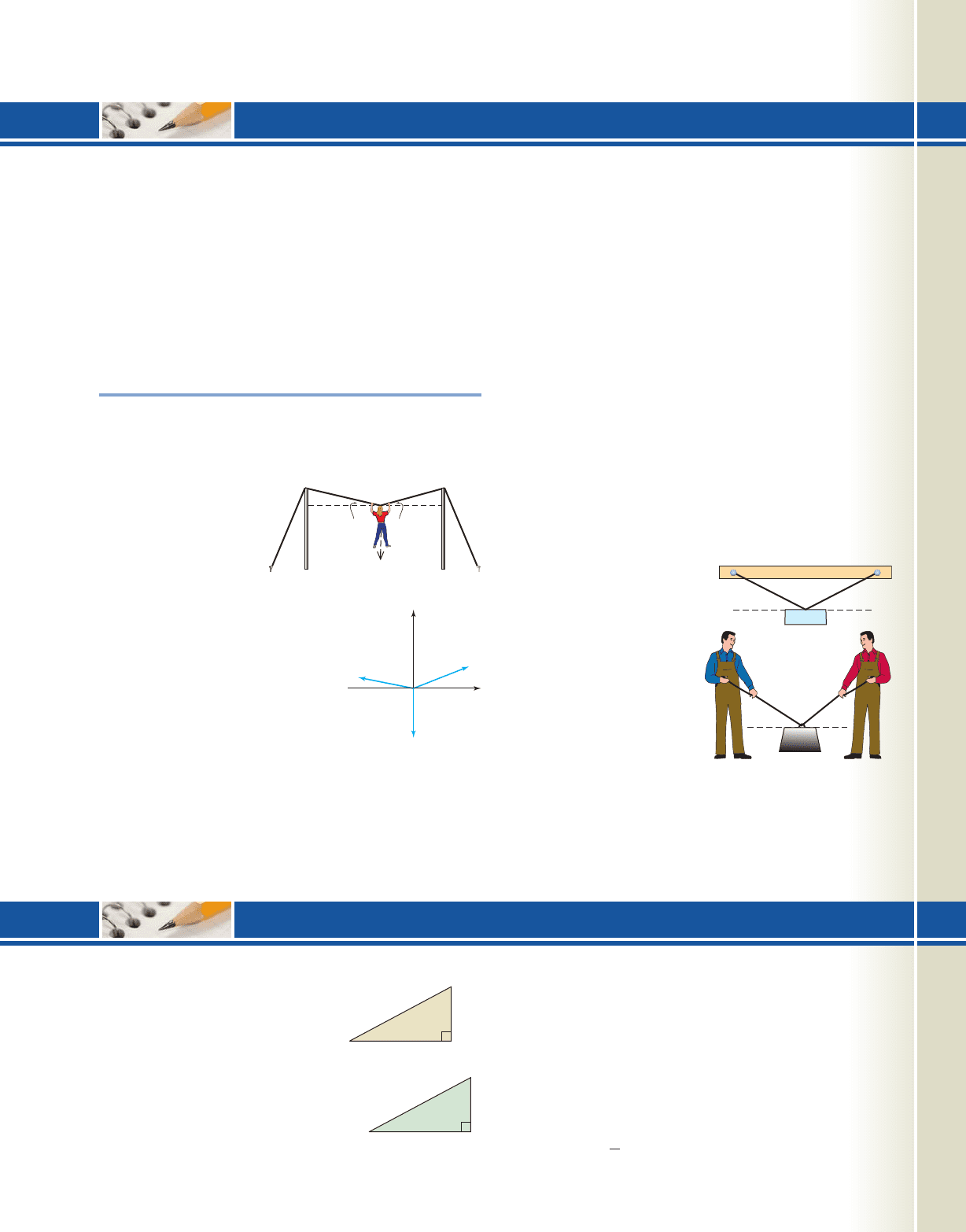
7-81 Cumulative Review Chapters 1–7 791
CUMULATIVE REVIEW CHAPTERS 1–7
STRENGTHENING CORE SKILLS
In Sections 7.3 and 7.4, the concepts of vector forces, result-
ant forces, and equilibrium were studied extensively. A nice
extension of these concepts involves what is called static
equilibrium.Assuming that only coplanar forces are acting
on an object, the object is said to be in static equilibrium if
the sum of all vector forces acting on it is 0.This implies that
the object is stationary, since the forces all counterbalance
each other. The methods involved are simple and direct, with
a wonderful connection to the systems of equations you’ve
likely seen previously. Consider the following example.
Illustration 1
As part of their training, prospective FBI
agents must move hand-over-hand across a rope strung
between two towers. An agent-in-training weighing 180 lb
is two-thirds of the way
across, causing the rope
to deflect from the hori-
zontal at the angles
shown. What is the
tension in each part of
the rope at this point?
Solution
We have three concur-
rent forces acting on the point
where the agent grasps the rope.
Begin by drawing a vector diagram
and computing the components of
each force, using the i, j notation.
Note that
For equilibrium, all vector forces must sum to the zero
vector: which results in the following
u v w 0,
0.9703
v
i 0.2419
v
j
v
v
cos114°2i
v
sin114°2j
0.9877
u
i 0.1564
u
j
u
u
cos19°2i
u
sin19°2j
w 180j.
equation:
.Factoring out i and j from
the left-hand side yields
.
Since any
two vectors are equal only when corresponding compo-
nents are equal, we obtain a system in the two variables
and
Solving the system using matrix equations and a calcula-
tor (or any desired method), gives and
At first it may seem surprising that the vector forces
(tension) in each part of the rope are so much greater than
the 180-lb the agent weighs. But with a 180-lb object
hanging from the middle of the rope, the tension required
to keep the rope taut (with small angles of deflection) must
be very great. This should become more obvious to you
after you work Exercise 2.
Exercise 1: A 500-lb crate is
suspended by two
ropes attached
to the ceiling
rafters. Find
the tension in
each rope.
Exercise 2: Two people
team up to
carry a 150-lb
weight by
passing a rope through an eyelet in the object.
Find the tension in each rope.
Exercise 3: Referring to Illustration 1, if the rope has a
tension limit of 600-lb (before it snaps), can
a 200-lb agent make it across?
v
455 lb.
u
447 lb
v
: e
0.9877
u
0.9703
v
2 0
0.1564
u
0.2419
v
180 0
.
u
0.2419
|
v
|
1802j i 0j10.1564
|
u
|
10.9877
|
u
|
0.9703
|
v
|
2i
180j 0i 0j0.2419
|
v
|
j
0.9877
|
u
|
i 0.1564
|
u
|
j 0.9703
|
v
|
i
Vectors and Static Equilibrium
9 14
u
w
v
180 lb
x
y
v
u
w
9
180
14
25 20
500 lb
45 45
150 lb
1. Solve using a
standard triangle.
____,
_
___
____,
_
___
2. Solve using
trigonometric ratios.
____,
_
___,
____,
,
_
___
3. A torus is a donut-shaped solid
figure. Its surface area is given by the formula
63°
c 82b a
30°,
c a 20, b
30
20 m
A
C
B
, where R is the outer radius of the
donut, and r is the inner radius. Solve the formula
for R in terms of r and A.
4. For a complex number (a) verify the sum of
a complex number and its conjugate is a real
number, and (b) verify the product of a complex
number and its conjugate is a real number.
5. State the value of all six trig functions given
with cos 7 0.tan
3
4
a bi,
A
2
1R
2
r
2
2
63
82 ft
AC
B
College Algebra & Trignometry—
cob19529_ch07_784-792.qxd 01/13/2009 08:16 PM Page 791 ssen 1 HD 049:Desktop Folder:Satya 13/01/09:Used file:MHDQ092-7-SUMM:
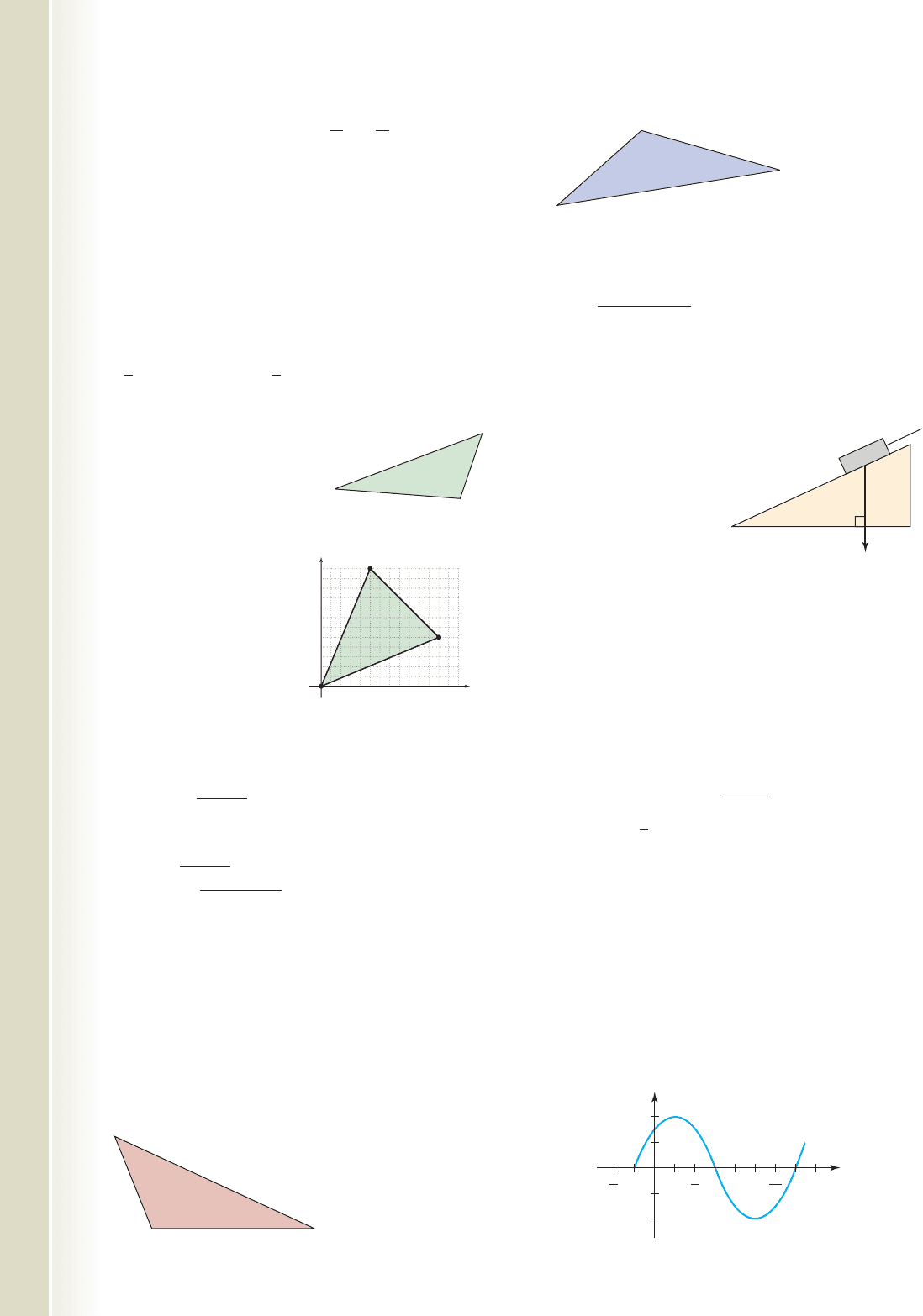
792 CHAPTER 7 Applications of Trigonometry 7-82
6. Sketch the graph of using
transformations of
7. Solve using the quadratic formula:
8. Solve by completing
the square:
9. Given and
approximate the value of and
without using a calculator.
10. Find all real values of x that satisfy the equation
State the answer in
degrees.
11. a. Given that
, find
the cost of a lot with the
dimensions shown (to the
nearest dollar) if land in this
area is going for $4500 per acre.
b. After an accident at
sea, a search and
rescue team decides
to focus their efforts
on the area shown due
to prevailing winds
and currents. Find the
distances between
each vertex (use Pythagorean triples and a special
triangle) and the number of square miles in the
search area.
12. State the domain of each function:
a.
b.
c.
d.
13. Write the following formulas from memory:
a. slope formula
b. midpoint formula
c. quadratic formula
d. distance formula
e. interest formula (compounded continuously)
Solve each triangle using the law of sines or the law of
cosines, whichever is appropriate.
14.
27
112
19 in.
A
CB
v1x2 2x
2
x 6
h1x2
x 3
x
2
5
g1x2 log
b
1x 32
f1x2 12x 3
1 acre 43,560 ft
2
13 2 sin12x2 213.
cos 125°cos 19°
cos 72° 0.3,cos 53° 0.6
3x
2
72x 427 0.
5x
2
8x 2 0.
y cos x.
y 4 cosa
6
x
3
b
15.
16. A commercial fishery stocks a lake with 250 fish.
Based on previous experience, the population of fish
is expected to grow according to the model
, where t is the time in months.
From on this model, (a) how many months are
required for the population to grow to 7500 fish?
(b) If the fishery expects to harvest three-fourths of
the fish population in 2 yr, approximately how many
fish will be taken?
17. A 900-lb crate is sitting on a
ramp which is inclined at
Find the force needed to hold
the object stationary.
18. A jet plane is flying at
750 mph on a heading of
There is a strong, 50-mph wind blowing from
due south (heading ). What is the true course and
speed of the plane (relative to the ground)?
19. Use the Guidelines for Graphing to sketch the graph
of function f given, then use it to solve .
20. Use the Guidelines for Graphing to sketch the graph
of function g given, then use it to name the intervals
where and .
21. Find using De Moivre’s theorem.
22. Solve .
23. If I saved $200 each month in an annuity program
that paid 8% annual interest compounded monthly,
how long would it take to save $10,000?
24. Mount Tortolas lies on the Argentine-Chilean border.
When viewed from a distance of 5 mi, the angle of
elevation to the top of the peak is How tall is
Mount Tortolas? State the answer in feet.
25. The graph given is of the form
Find the values of A, B, and C.
x
y
2
1
2
1
3
2
2
2
2
y A sin1Bx C2.
38°.
ln1x 22 ln1x 32 ln14x2
11 13
i2
8
g1x2
x
2
4
x
2
1
g1x2cg1x2T
f1x2 x
3
4x
2
x 6
f1x26 0
0°
30°.
28°.
P1t2
12,000
1 25e
0.2t
31 cm
52 cm
A
C
B
37
25.9
1475 ft
2008 ft
Eas
t
North
(0, 0)
(5, 12)
(12, 5)
2
0
2
4
6
8
10
12
4681012 14
College Algebra & Trignometry—
G
900 lb
900 lb
28
cob19529_ch07_784-792.qxd 01/13/2009 08:18 PM Page 792 ssen 1 HD 049:Desktop Folder:Satya 13/01/09:Used file:MHDQ092-7-SUMM:
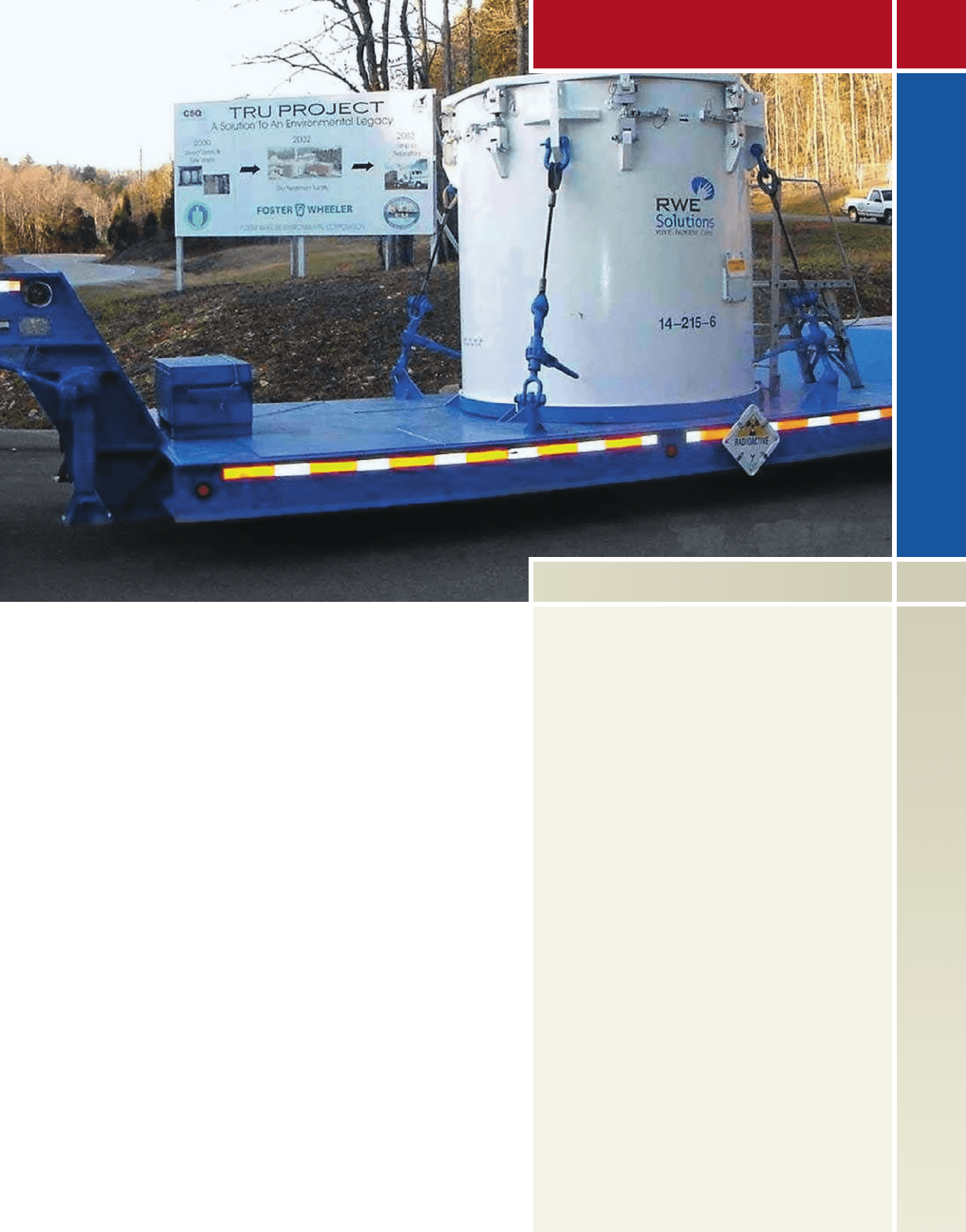
Systems of
Equations and
Inequalities
CHAPTER OUTLINE
8.1 Linear Systems in Two Variables
with Applications 794
8.2 Linear Systems in Three Variables
with Applications 806
8.3 Nonlinear Systems of Equations
and Inequalities 819
8.4 Systems of Inequalities and
Linear Programming 826
8
8
CHAPTER CONNECTIONS
The disposal of hazardous waste is a growing
concern for today’s communities, and with
many budgets stretched to the breaking point,
there is a cost/benefit analysis involved. One
major hauler uses trucks with a carrying
capacity of 800 ft
3
, and can transport at most
10 tons. A full container of liquid waste weighs
800 lb and has a volume of 20 ft
3
, while a full
container of solid waste weighs 600 lb and has
a volume of 30 ft
3
. If the hauler makes $300
for disposing of liquid waste and $400 for
disposing of solid waste, what is the maximum
revenue that can be generated per truck?
Chapter 8 outlines a systematic process for
answering this question. This application
appears as Exercise 58 in Section 8.4.
Check out these other real-world connections:
Appropriate Measurements in Dietetics
(Section 8.1, Exercise 64)
Allocating Winnings to Different Investments
(Section 8.2, Exercise 54)
Minimizing Shipping Costs
(Section 8.4, Exercise 61)
Market Pricing for Organic Produce
(Section 8.3, Exercise 56)
793
College Algebra & Trignometry—
cob19529_ch08_793-805.qxd 12/1/08 3:10 PM Page 793 epg HD 049 :Desktop Folder:Satya 01/12/08:
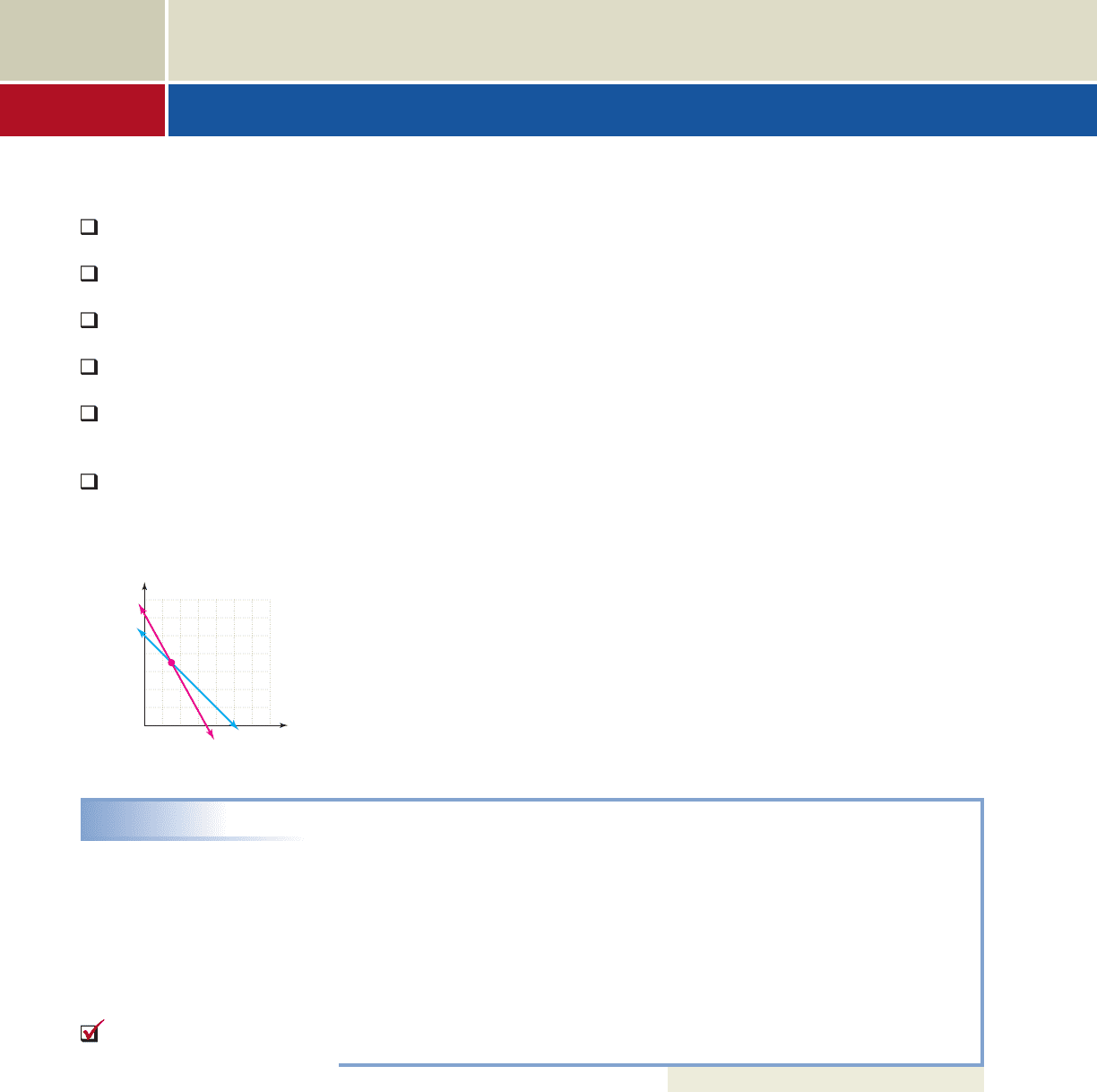
8.1 Linear Systems in Two Variables with Applications
In earlier chapters, we used linear equations in two variables to model a number of real-
world situations. Graphing these equations gave us a visual image of how the variables
were related, and helped us better understand this relationship. In many applications,
two different measures of the independent variable must be considered simultaneously,
leading to a system of two linear equations in two unknowns. Here, a graphical pres-
entation once again supports a better understanding, as we explore systems and their
many applications.
A. Solutions to a System of Equations
A system of equations is a set of two or more equations for which a common solu-
tion is sought. Systems are widely used to model and solve applications when the infor-
mation given enables the relationship between variables to be stated in different ways.
For example, consider an amusement park that brought in $3100 in revenue by charg-
ing $9.00 for adults and $5.00 for children, while selling 500 tickets. Using a for adult
and c for children, we could write one equation modeling the number of tickets sold:
, and a second modeling the amount of revenue brought in:
. To show that we’re considering both equations simultaneously, a
large “left brace” is used and the result is called a system of two equations in two
variables:
We note that both equations are linear and will have different slope values, so their
graphs must intersect at some point. Since every point on a line satisfies the equation
of that line, this point of intersection must satisfy both equations simultaneously and
is the solution to the system. The figure that accompanies Example 1 shows the point
of intersecion for this system is (150, 350).
EXAMPLE 1
Verifying Solutions to a System
Verify that (150, 350) is a solution to .
Solution
Substitute the 150 for a and 350 for c in each equation.
first equation second equation
✓✓
Since (150, 350) satisfies both equations, it is the solution to the system and we
find the park sold 150 adult tickets and 350 tickets for children.
Now try Exercises 7 through 18
B. Solving Systems Graphically
To solve a system of equations means we apply various methods in an attempt to find
ordered pair solutions. As Example 1 suggests, one method for finding solutions is to
graph the system. Any method for graphing the lines can be employed, but to keep
important concepts fresh, the slope-intercept method is used here.
3100 3100 500 500
911502 513502 3100 11502 13502 500
9a 5c 3100 a c 500
e
a c 500
9a 5c 3100
e
a c 500
9a 5c 3100
9a 5c 3100
a c 500
794 8-2
Learning Objectives
In Section 8.1 you will learn how to:
A. Verify ordered pair
solutions
B. Solve linear systems by
graphing
C. Solve linear systems by
substitution
D. Solve linear systems by
elimination
E. Recognize inconsistent
systems and dependent
systems
F. Use a system of
equations to model and
solve applications
A. You’ve just learned how
to verify ordered pair
solutions
0
100
100 300 500 700
300
500
700
Children
Adults
9a 5c 3100
a c 500
(150, 350)
number of tickets
amount of revenue
College Algebra & Trignometry—
cob19529_ch08_793-846.qxd 11/28/08 15:50 Page 794
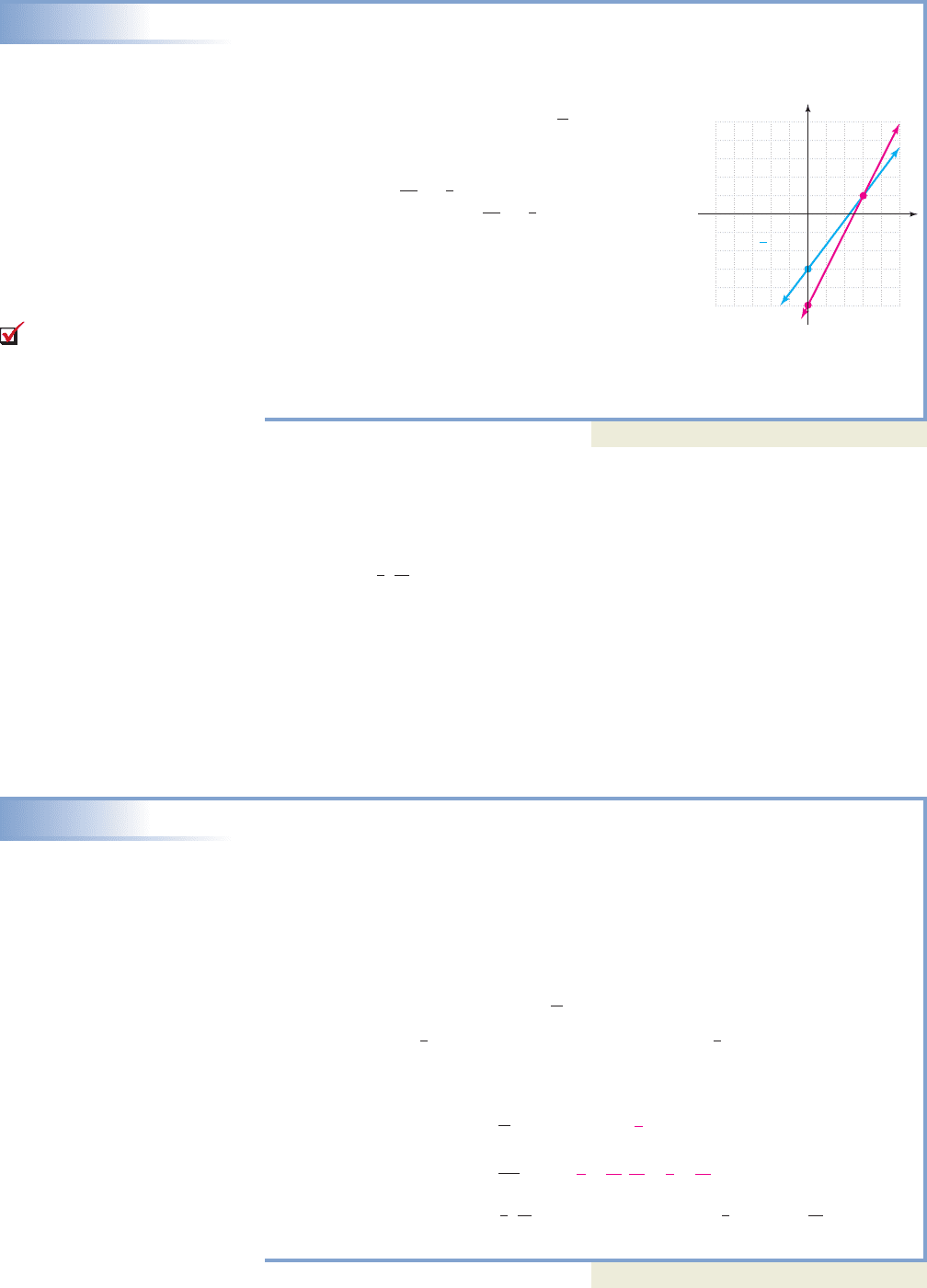
8-3 Section 8.1 Linear Systems in Two Variables with Applications 795
EXAMPLE 2
Solving a System Graphically
Solve the system by graphing:
Solution
First write each equation in slope-intercept form (solve for y):
For the first line, with y-intercept
The second equation yields with as
the y-intercept. Both are then graphed on the grid as
shown. The point of intersection appears to be (3, 1),
and checking this point in both equations gives
✓✓
This verifies that (3, 1) is the solution to the system.
Now try Exercises 19 through 22
C. Solving Systems by Substitution
While a graphical approach best illustrates why the solution must be an ordered pair,
it does have one obvious drawback—noninteger solutions are difficult to spot. The
ordered pair is the solution to but this would be difficult to
“pinpoint” as a precise location on a hand-drawn graph. To overcome this limitation,
we next consider a method known as substitution. The method involves converting a
system of two equations in two variables into a single equation in one variable by using
an appropriate substitution. For the second equation says “y is two more
than x.” We reason that all points on this line are related this way, including the point
where this line intersects the other. For this reason, we can substitute for yin
the first equation, obtaining a single equation in x.
EXAMPLE 3
Solving a System Using Substitution
Solve using substitution:
Solution
Since we can replace y with in the first equation.
first equation
substitute for y
simplify
result
The x-coordinate is To find the y-coordinate, substitute for x into either of the
original equations. Substituting in the second equation gives
second equation
substitute for x
The solution to the system is Verify by substituting for x and for y into
both equations.
Now try Exercises 23 through 32
12
5
2
5
1
2
5
,
12
5
2.
2
1
10
5
,
10
5
2
5
12
5
12
5
2
5
2
5
2
y x 2
2
5
2
5
.
x
2
5
5 x 2 4
x 2 4 x 1x 22 4
4 x y 4
x 2y x 2,
e
4x y 4
y x 2
.
x 2
e
4x y 4
y x 2
,
e
4x y 4
y x 2
,1
2
5
,
12
5
2
5 5 9 9
2132 1125 4132 3112 9
2x y 5 4x 3y 9
10, 52
¢y
¢x
2
1
10, 32.
¢y
¢x
4
3
•
4x 3y 9
2x y 5
S •
y
4
3
x 3
y 2x 5
e
4x 3y 9
2x y 5
.
x
y
55
5
5
(3, 1)
(0, 3)
(0, 5)
y 2x 5
y x 3
4
3
substitute 3
for x and 1 for y
B. You’ve just learned how
to solve linear systems by
graphing
College Algebra & Trignometry—
cob19529_ch08_793-846.qxd 11/28/08 15:50 Page 795

796 CHAPTER 8 Systems of Equations and Inequalities 8-4
If neither equation allows an immediate substitution, we first solve for one of the
variables, either x or y, and then substitute. The method is summarized here, and can
actually be used with either like variables or like variable expressions. See Exercises
57 to 60.
Solving Systems Using Substitution
1. Solve one of the equations for x in terms of y or y in terms of x.
2. Substitute for the appropriate variable in the other equation and solve for the
variable that remains.
3. Substitute the value from step 2 into either of the original equations and solve
for the other unknown.
4. Write the answer as an ordered pair and check the solution in both original
equations.
D. Solving Systems Using Elimination
Now consider the system where solving for any one of the variables
will result in fractional values. The substitution method can still be used, but often the
elimination method is more efficient. The method takes its name from what happens
when you add certain equations in a system (by adding the like terms from each). If
the coefficients of either x or y are additive inverses—they sum to zero and are elim-
inated. For the system shown, adding the equations produces , giving ,
then using back-substitution (verify).
When neither variable term meets this condition, we can multiply one or both
equations by a nonzero constant to “match up” the coefficients, so an elimination will
take place. In doing so, we create an equivalent system of equations, meaning one
that has the same solution as the original system. For , multiplying
the second equation by 2 produces , giving after “adding
the equations.” Note the three systems produced are equivalent, and have the solution
(4, 3) ( was found using back-substitution).
1. 2. 3.
In summary,
Operations that Produce an Equivalent System
1. Changing the order of the equations.
2. Replacing an equation by a nonzero constant multiple of that equation.
3. Replacing an equation with the sum of two equations from the system.
Before beginning a solution using elimination, check to make sure the equations
are written in the standard form so that like terms will appear
above/below each other. Throughout this chapter, we will use R1 to represent the equa-
tion in row 1 of the system, R2 to represent the equation in row 2, and so on. These
designations are used to help describe and document the steps being used to solve a
system, as in Example 4 where indicates the first equation has been multi-
plied by two, with the result added to the second equation.
2R1 R2
Ax By C,
e
7x 4y 16
x 4
e
7x 4y 16
6x 4y 12
e
7x 4y 16
3x 2y 6
y 3
x 4e
7x 4y 16
6x 4y 12
e
7x 4y 16
3x 2y 6
x 1
y 32y 6
e
2x 5y 13
2x 3y 7
,
C. You’ve just learned how
to solve linear systems by
substitution
College Algebra & Trignometry—
cob19529_ch08_793-846.qxd 11/28/08 15:50 Page 796
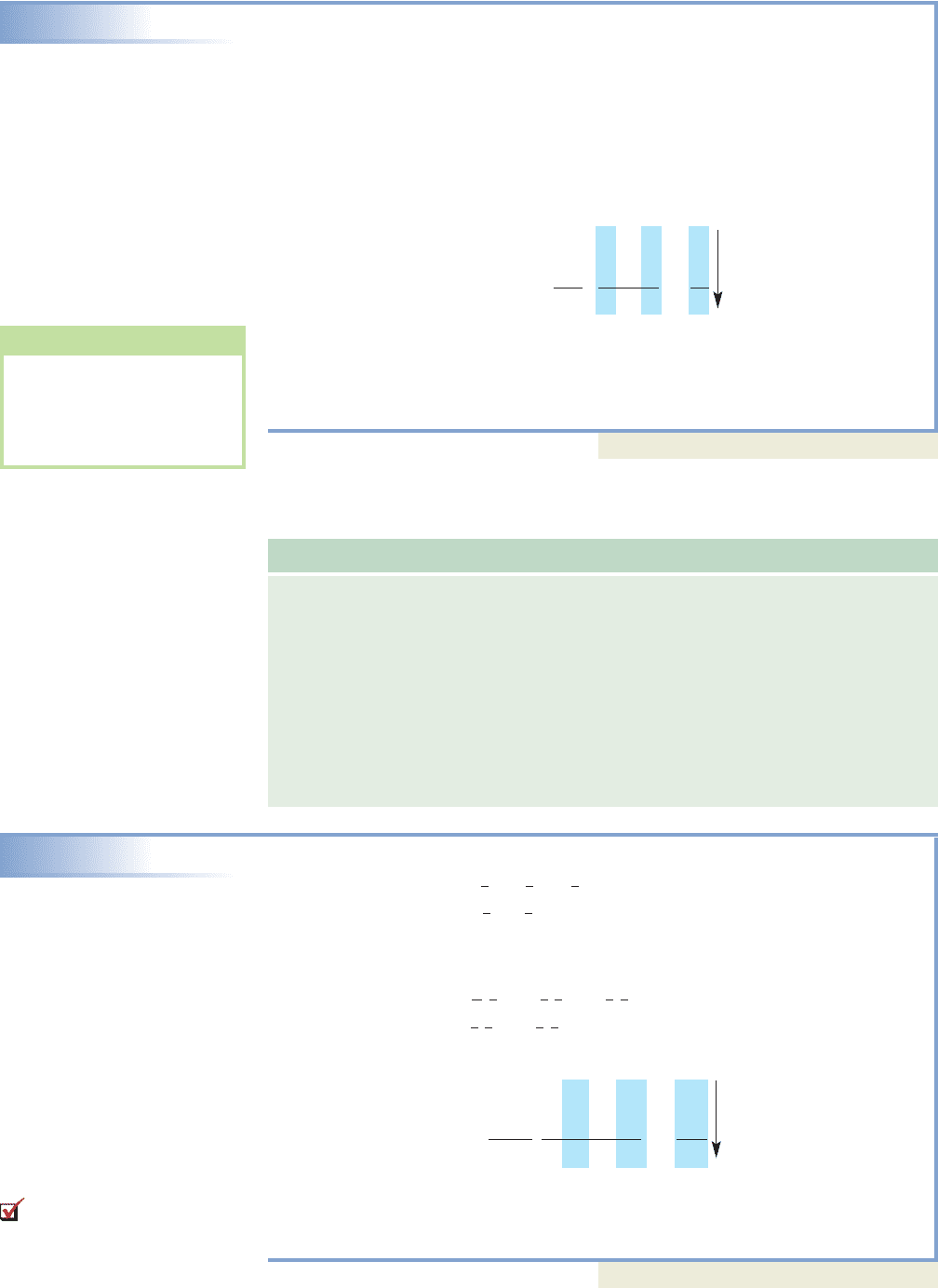
8-5 Section 8.1 Linear Systems in Two Variables with Applications 797
EXAMPLE 4
Solving a System by Elimination
Solve using elimination:
Solution
The second equation is not in standard form, so we re-write the system as
. If we “add the equations” now, we would get with
neither variable eliminated. However, if we multiply both sides of the first equation
by 2, the y-coefficients will be additive inverses. The sum then results in an
equation with x as the only unknown.
Substituting 2 for x back into either of the original equations yields The
ordered pair solution is (2, ). Verify using the original equations.
Now try Exercises 33 through 38
The elimination method is summarized here. If either equation has fraction or
decimal coefficients, we can “clear” them using an appropriate constant multiplier.
Solving Systems Using Elimination
1. Write each equation in standard form:
2. Multiply one or both equations by a constant that will create coefficients of x
(or y) that are additive inverses.
3. Combine the two equations using vertical addition and solve for the variable
that remains.
4. Substitute the value from step 3 into either of the original equations and solve
for the other unknown.
5. Write the answer as an ordered pair and check the solution in both original
equations.
EXAMPLE 5
Solving a System Using Elimination
Solve using elimination:
Solution
Multiplying the first equation by 8(8R1) and the second equation by 6(6R2) will
clear the fractions from each.
The x-terms can now be eliminated if we use .
Substituting in either of the original equations yields and the
solution is Verify by substituting in both equations.
Now try Exercises 39 through 44
114, 122.
x 14,y 12
3R1
5
R2
15x 18y 6
15x 20y 30
0x 2y 24
y 12
3R1 15R22
8R1
6R2
e
8
1
1
5
8
2x
8
1
1
3
4
2y
8
1
1
1
4
2
6
1
1
1
2
2x
6
1
1
2
3
2y 6112
S e
5x 6y 2
3x 4y 6
e
5
8
x
3
4
y
1
4
1
2
x
2
3
y 1
.
Ax By C.
1
y 1.
2R1
R2
4x 6y 14
5x 6y 4
9x 0y 18
9x 18
x 2
7x 3y 11,e
2x 3y 7
5x 6y 4
e
2x 3y 7
6y 5x 4
{
add
solve for x
sum
{
add
solve for y
sum
WORTHY OF NOTE
As the elimination method
involves adding two
equations, it is sometimes
referred to as the addition
method for solving systems.
D. You’ve just learned how
to solve linear systems by
elimination
College Algebra & Trignometry—
cob19529_ch08_793-846.qxd 11/28/08 15:51 Page 797

798 CHAPTER 8 Systems of Equations and Inequalities 8-6
CAUTION
Be sure to multiply all terms (on both sides) of the equation when using a constant
multiplier. Also, note that for Example 5, we could have eliminated the y-terms using 2R1
with .
E. Inconsistent and Dependent Systems
A system having at least one solution is called a consistent system. As seen in
Example 2, if the lines have different slopes, they intersect at a single point and the
system has exactly one solution. Here, the lines are independent of each other and the
system is called an independent system. If the lines have equal slopes and the same
y-intercept, they are identical or coincident lines. Since one is right atop the other, they
intersect at all points, and the system has an infinite number of solutions. Here, one
line depends on the other and the system is called a dependent system. Using substi-
tution or elimination on a dependent system results in the elimination of all variable
terms and leaves a statement that is always true, such as or some other simple
identity.
0 0
3R2
EXAMPLE 6
Solving a Dependent System
Solve using elimination: .
Solution
Writing the system in standard form gives
. By applying we can
eliminate the variable x:
Although we didn’t expect it, both variables were eliminated and the final
statement is true This indicates the system is dependent, which the graph
verifies (the lines are coincident). Writing both equations in slope-intercept form
shows they represent the same line.
The solutions of a dependent system are often written in set notation as the set
of ordered pairs (x, y), where y is a specified function of x. For Example 6 the
solution would be Using an ordered pair with an arbitrary
variable, called a parameter, is also common:
Now try Exercises 45 through 56
Finally, if the lines have equal slopes and different y-intercepts, they are parallel and
the system will have no solution. A system with no solutions is called an inconsistent
system.An “inconsistent system” produces an “inconsistent answer,” such as or
some other false statement when substitution or elimination is applied. In other words, all
variable terms are once again eliminated, but the remaining statement is false.A summary
of the three possibilities is shown here for arbitrary slope m and y-intercept (0, b).
12 0
ap,
3p
4
3b.
51x, y20y
3
4
x 36.
μ
y
3
4
x 3
y
3
4
x 3
e
4y 3x 12
8y 6x 24
e
3x 4y 12
6x 8y 24
10 02.
6x 8y 24
6x 8y
24
0x 0y 0
0 0
e
2R1
R2
2R1,e
3x 4y 12
6x 8y 24
e
3x 4y 12
6x 24 8y
sum
add
variables are eliminated
true statement
E. You’ve just learned how
to recognize inconsistent and
dependent systems
x
y
55
5
5
(0, 3)
(4, 0)
6x 24 8y
3x 4y 12
WORTHY OF NOTE
When writing the solution to
a dependent system using a
parameter, the solution can
be written in many different
ways. For instance, if we let
for the first coordi-
nate of the solution to
Example 6, we have
as
the second coordinate, and
the solution becomes
(4b, 3b 3) for any
constant b.
314b2
4
3 3b 3
p 4b
College Algebra & Trignometry—
cob19529_ch08_793-846.qxd 11/28/08 15:51 Page 798
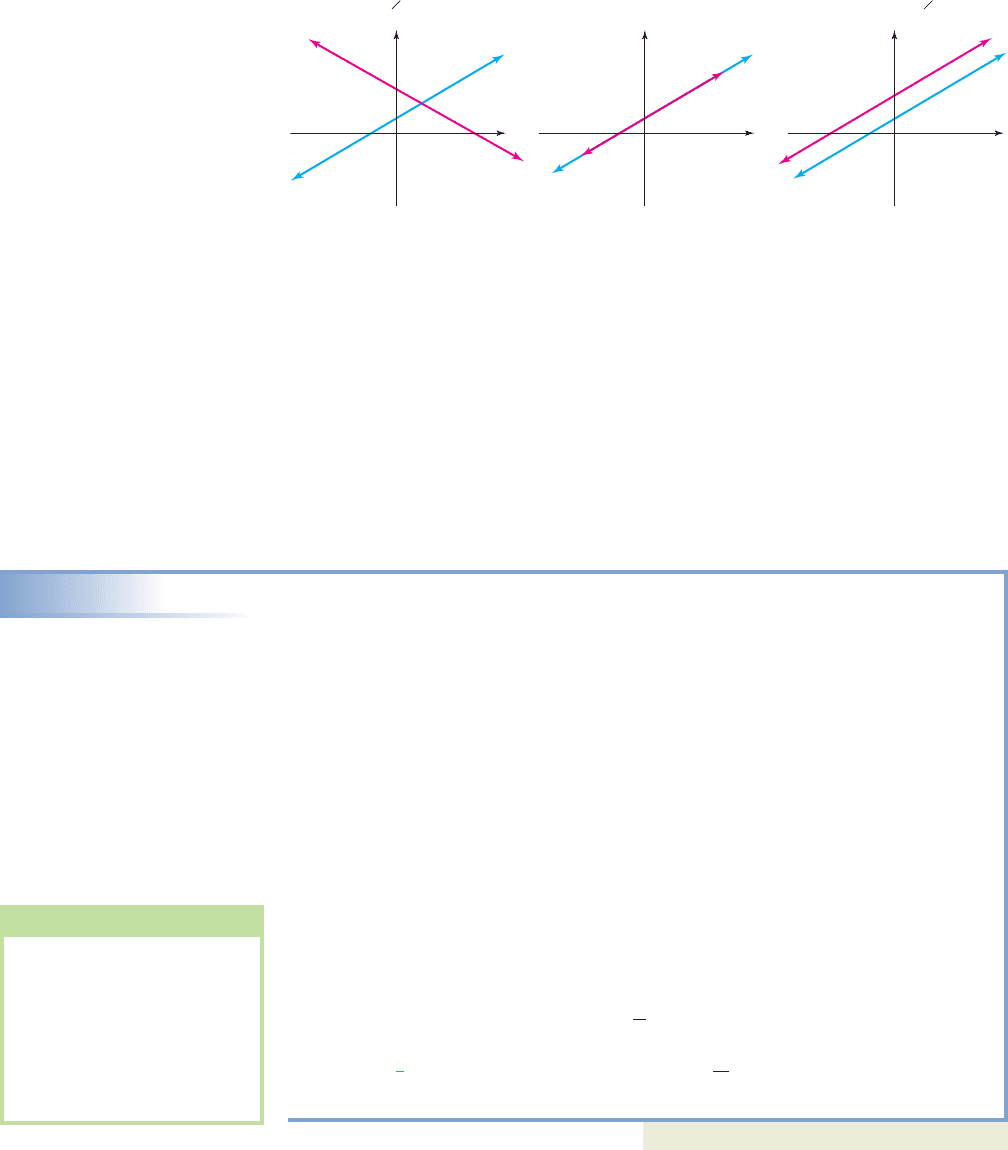
8-7 Section 8.1 Linear Systems in Two Variables with Applications 799
F. Systems and Modeling
In previous chapters, we solved numerous real-world applications by writing all given
relationships in terms of a single variable. Many situations are easier to model using
a system of equations with each relationship modeled independently using two vari-
ables. We begin here with a mixture application. Although they appear in many dif-
ferent forms (coin problems, metal alloys, investments, merchandising, and so on),
mixture problems all have a similar theme. Generally one equation is related to quan-
tity (how much of each item is being combined) and one equation is related to value
(what is the value of each item being combined).
EXAMPLE 7
Solving a Mixture Application
A jeweler is commissioned to create a piece of artwork that will weigh 14 oz and
consist of 75% gold. She has on hand two alloys that are 60% and 80% gold,
respectively. How much of each should she use?
Solution
Let x represent ounces of the 60% alloy and y represent ounces of the 80% alloy.
The first equation must be since the piece of art must weigh exactly
14 oz (this is the quantity equation). The x ounces are 60% gold, the y ounces are
80% gold, and the 14 oz will be 75% gold. This gives the value equation:
The system is (after clearing decimals).
Solving for y in the first equation gives Substituting for y in
the second equation gives
second equation
substitute for y
simplify
solve for x
Substituting for x in the first equation gives She should use 3.5 oz of the
60% alloy and 10.5 oz of the 80% alloy.
Now try Exercises 63 through 70
Systems of equations also play a significant role in cost-based pricing in the busi-
ness world. The costs involved in running a business can broadly be understood as
either a fixed cost k or a variable cost v. Fixed costs might include the monthly rent
paid for facilities, which remains the same regardless of how many items are produced
and sold. Variable costs would include the cost of materials needed to produce the item,
which depends on the number of items made. The total cost can then be modeled by
y
21
2
.
7
2
x
7
2
2x 112 105
14 x 6 x 8114 x2 105
6 x 8y 105
14 xy 14 x.
e
x y 14
6x 8y 105
0.6x 0.8y 0.751142.
x y 14,
y
One point in common
Independent
m
1
m
2
x
Dependent
m
1
m
2
, b
1
b
2
All points in common
x
y
Inconsistent
m
1
m
2
, b
1
b
2
x
No points in common
y
WORTHY OF NOTE
As an estimation tool, note
that if equal amounts of the
60% and 80% alloys were
used (7 oz each), the result
would be a 70% alloy
(halfway in between). Since a
75% alloy is needed, more of
the 80% gold will be used.
College Algebra & Trignometry—
cob19529_ch08_793-846.qxd 11/28/08 15:51 Page 799
